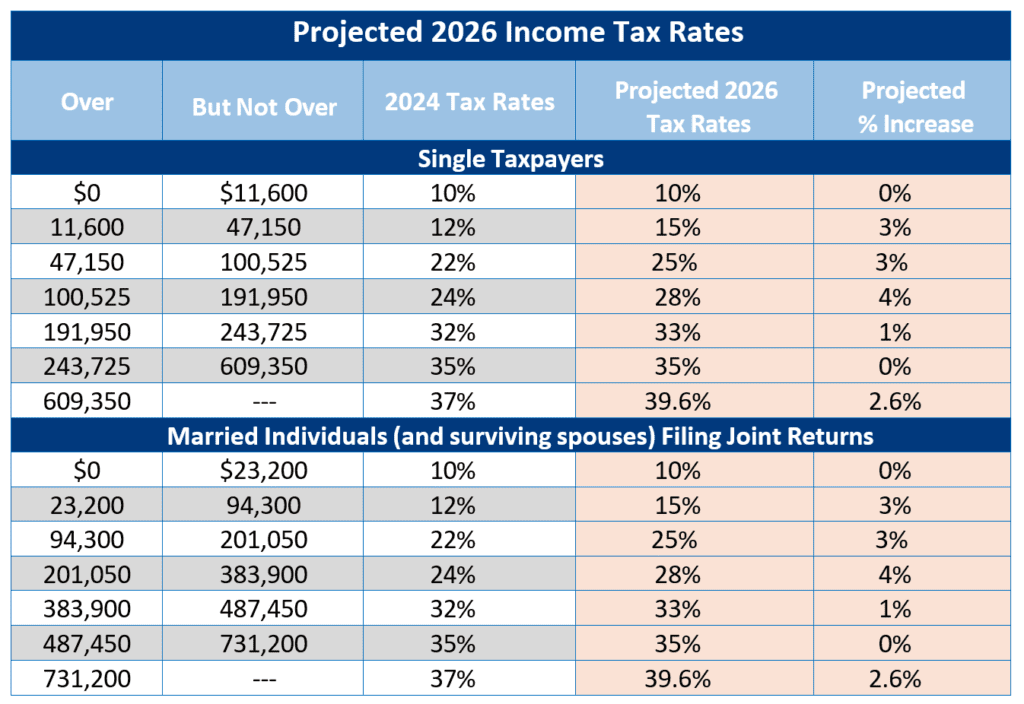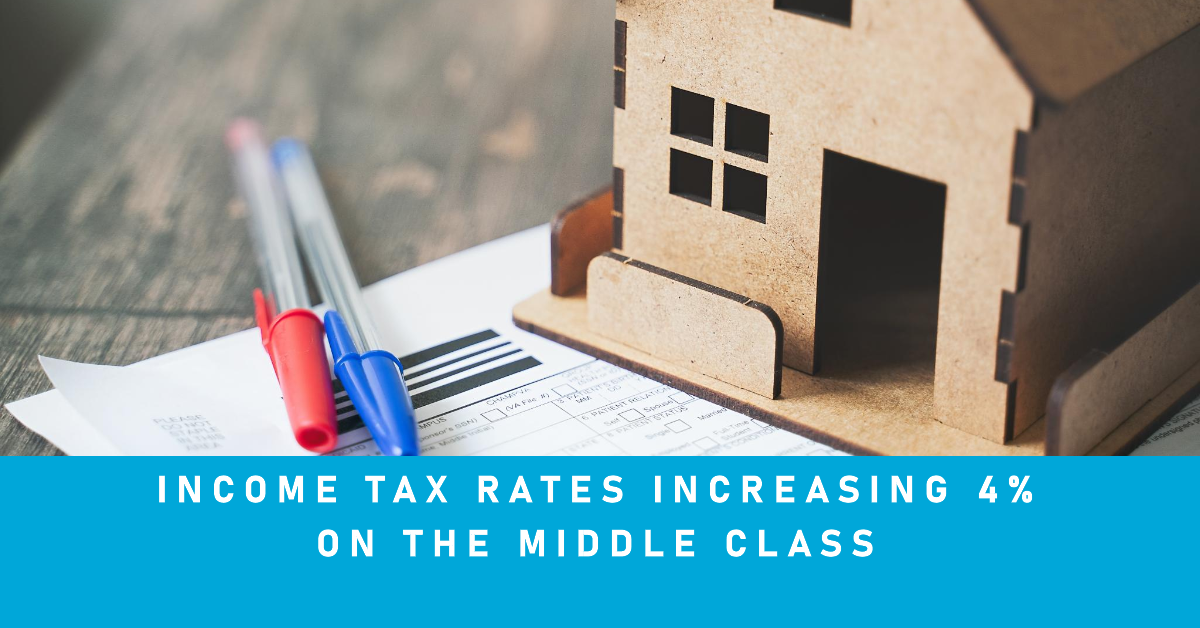Navigating the 2025 Tax Landscape: Changes on the Horizon for Taxpayers
As we edge closer to 2025, the anticipation among taxpayers regarding the looming changes in the tax landscape is causing concern. The expiration of several critical provisions of the Tax Cuts and Jobs Act (TCJA) at the end of 2025 is set to significantly alter the tax code, affecting individuals and businesses alike. This article delves into some of the key tax changes expected to come into force in 2025, offering insights into how taxpayers can navigate this shifting landscape.
What Tax Provisions Are Set to Expire at the End of 2025?
Understanding the Impact of the TCJA Provisions Expiring
The Tax Cuts and Jobs Act (TCJA) of 2017 introduced sweeping changes to the U.S. tax system. However, many of these key provisions are set to expire at the end of 2025, heralding a return to the pre-TCJA tax landscape unless Congress acts to extend them. The expiration includes increasing individual income tax rates, lowering the standard deduction, reducing the Child Tax Credit, and changes to the alternative minimum tax (AMT). Taxpayers need to be aware of these impending changes to plan effectively for their financial future.
1. Income Tax Rates are Increasing by as Much as 4%
By 2026, unless there is legislative intervention, we are likely to witness a reversion to the pre-TCJA individual income tax rates. This means the lower tax rates enjoyed by taxpayers across various brackets could see an increase, affecting their overall tax liabilities. The year 2025 serves as the transitional period during which taxpayers must strategize to take advantage of the lower rates before they expire. To learn more, visit our article on income tax rates increasing 4% for the middle class.

2. Standard Deduction Reducing by 50%
For 2024, the standard deduction for an individual is $14,600, and married filing jointly is $29,200. In 2026, the deduction would be reduced to $8,300 for an individual and $16,600 for married filing jointly.
3. Child Tax Credit Reducing by 50%
For 2024, the child tax credit is $2,000 per child under 17 years old. In 2026, the child tax credit would be reduced to $1,000 per child under 17 years old.
4. State and Local Tax (SALT) Deduction
For 2024, the state and local tax deduction is capped at $10,000. In 2026, the SALT deduction is uncapped.
5. Mortgage and Home Equity Interest Deduction
For 2024, interest paid on up to $750,000 of mortgage debt is deductible and under TJCA home equity interest was eliminated. In 2026, the limit will increase to $1 milion of mortgage debt and the home equity interest deduction will be available for up to $100,000.
6. Charitable Contribution Deduction Limit
For 2024, cash charitable contributions are deductible up to 60% of AGI. In 2026, the deductible goes down to 50% of AGI. If you plan on making significant charitable donations, consider strategies for tax-efficient charitable giving before these limits revert.
7. Personal Exemption
Exemptions reduce taxable income for each self, spouse, and child. For 2024, the exemption is set a $0. For 2026, the exemption will revert back to $5,300.
8. Miscellaneous Itemized Deduction
For 2024, there is no deduction for miscellaneous expenses. In 2026, the miscellaneous itemized deduction will be available once deductions exceed 2 percent of AGI.
9. Alternative Minimum Tax (AMT)
For 2024, TJCA increased the exemption amounts so that fewer people paid the AMT tax. In 2026, it is estimated that more than 5 million people will be subject to AMT. The current AMT exemption is $85,700 for individuals and $133,300 for married filing jointly.
10. Lifetime Gift and Estate Tax Exemption
For 2024, the estate tax exclusion is $13,610,000 per person. In 2026, the exclusion will be reduced to $7,150,000 per person. Taxpayers should be mindful of how estate and inheritance taxes could affect their overall estate plans.
11. Qualified Business Income Tax Deduction
For 2024, the deduction is equal to 20% of qualifying business income. In 2026, there will be no deduction available. This could place small business owners paying a higher tax rate than corporations.
How Will Income Tax Rates Change in 2025?
The Shift in Tax Brackets and What It Means for You
As we approach 2025, the adjustment in tax brackets is a critical factor for taxpayers to consider. With the anticipated changes, some may find themselves in higher tax brackets if their income levels increase without corresponding adjustments in the bracket thresholds. This shift underscores the necessity for individuals and families to understand where they stand and to seek avenues to mitigate potential tax increases.
The Potential Reversion of Tax Brackets and Rates
The current tax brackets and rates, favorable to many, are on borrowed time. The end of 2025 marks the potential reversion to higher tax rates, impacting individuals across the income spectrum. Particularly for those in the middle brackets, this change could mean a significant increase in their tax bill, underlining the importance of proactive tax planning in the intervening years.
Anticipating the Changes in Federal Tax Rates
The changes in federal tax rates expected in 2025 will primarily be dictated by the expiration of the TCJA provisions. Taxpayers should anticipate adjustments that could see them facing higher rates than in previous years. Keeping abreast of these changes and understanding their impact on one’s financial situation will be key to navigating the 2025 tax year effectively.
Income Tax Projections for Different Income Levels in 2025
Income tax projections for 2025 indicate varied impacts across different income levels. High-income taxpayers might see the most significant shifts in their tax rate, given the likely expiration of the provisions that currently provide for lowered maximum rates. Middle-income individuals, while perhaps not as drastically affected, will nonetheless need to prepare for possible increases. Low-income earners may see the least change but should still plan for adjustments in tax credits and deductions.
What Does the Expiration of Tax Cuts Mean for Taxpayers in 2025?
Exploring the Sunset of Key Tax Cut Provisions
The sunset of key tax cut provisions by the end of 2025 heralds significant changes for taxpayers. Notably, the increased standard deduction, child tax credit expansions, and favorable adjustments to the estate and gift tax exemption are all scheduled to revert to their pre-TCJA levels. This rollback will require taxpayers to reassess their tax positions and make necessary adjustments to safeguard their financial interests.
The End of Lower Tax Rates: How to Prepare
With the end of lower tax rates on the horizon, preparation is key. Taxpayers should consider maximizing contributions to retirement accounts, exploring tax-efficient investment options, and taking advantage of current tax deductions and credits before they diminish or disappear. Engaging in tax planning strategies with professionals can also provide tailored approaches to navigate the transition smoothly.
The TCJA and Its Temporal Effects on Tax Legislation
The TCJA has had a profound but temporary effect on the U.S. tax legislation. Its wide-ranging provisions, aimed at reducing tax liabilities for individuals and businesses, are set for a reevaluation as we approach their expiration. This presents a pivotal moment for legislative bodies to review the effectiveness of these measures and decide on their future, impacting how taxpayers will engage with the tax system in 2025 and beyond.
Adjusting to New Tax Brackets: Strategies for 2025 and Beyond
Future Tax Planning: Steps to Take Today
Effective tax planning for 2025 and beyond begins with understanding the impending changes to the tax code and aligning one’s financial strategy accordingly. Taxpayers should consider diversifying income sources, increasing savings in tax-advantaged accounts, and exploring deductions and credits that may be more beneficial in the coming years. Proactivity is key to leveraging the current tax advantages before they expire.
How to Navigate the Transition to Higher Income Tax Brackets
Navigating the transition to higher income tax brackets requires a strategic approach to income and deductions. This might involve timing the realization of capital gains, bunching deductible expenses in years where they can provide the most benefit, and considering Roth conversions while tax rates are relatively low. Understanding the nuances of the tax code and seeking professional advice can provide pathways to minimize tax liabilities during this transition.
Tax Bracket Changes: Potential Winners and Losers
The upcoming tax bracket changes will inevitably create potential winners and losers. Those who stand to benefit are likely to be individuals who proactively engage in tax planning, taking steps to lock in lower rates and maximize deductions while they’re available. Conversely, those who fail to plan may find themselves facing unexpected tax increases, impacting their financial well-being. An informed approach to tax planning can help mitigate the risks and leverage the opportunities presented by the evolving tax landscape.
The Future of Tax Deductions and Credits: Predictions for 2025
Will the Increased Standard Deduction and Child Tax Credit Continue?
The increased standard deduction and expanded child tax credit have provided substantial relief to many taxpayers since their introduction under the TCJA. As 2025 approaches, whether these benefits will continue remains a point of speculation. Taxpayers should stay informed on legislative developments and consider strategies to mitigate the impact should these provisions expire.
Estate and Gift Tax Exemptions: Preparing for Reductions
The anticipated reduction in estate and gift tax exemptions represents a significant shift for those engaged in estate planning. Taxpayers should assess the implications of these changes on their estate planning strategies and consider accelerating gifts or exploring other avenues to optimize their estate and gift tax positions before the provisions sunset.
Changes in Deduction Rules for Businesses and Individuals
With the looming tax changes, deductions for both businesses and individuals are in flux. Businesses should examine how changes in the corporate tax rate and deductions might affect their tax liabilities and operational strategies. Individuals, particularly those with business income, need to be proactive in understanding how changes to deductions such as those for business expenses, home office setups, and others could impact their tax returns. Planning with these changes in mind will be crucial for maximizing tax efficiency in 2025 and beyond.
The tax landscape in 2025 will present both challenges and opportunities for taxpayers. By understanding the upcoming changes and engaging in proactive tax planning, individuals and businesses can navigate these uncertainties with confidence. The expiration of the TCJA provisions offers a moment for reflection and adjustment, emphasizing the importance of staying informed and adaptable in the face of change.
Reach Out to Us!
If you have additional federal benefit questions, reach out to our team of CERTIFIED FINANCIAL PLANNER™ (CFP®), Chartered Federal Employee Benefits Consultants (ChFEBC℠), and Accredited Investment Fiduciaries (AIF®). At PlanWell, we focus on retirement planning for federal employees. Learn more about our process designed for the career federal employee.
Preparing for a federal retirement? Check out our scheduled federal retirement workshops. Sign up for our no-cost federal retirement webinars through our online schedule. Make sure to plan ahead and reserve your seat for our FERS webinar, held every three weeks. Want to have PlanWell host a federal retirement seminar for your agency? Reach out and we’ll collaborate with HR to arrange an on-site FERS seminar.
Want to fast track your federal retirement plan? Skip the FERS webinar and start a one-on-one conversation with a ChFEBC today. You can schedule a one-on-one meeting using our online form.








